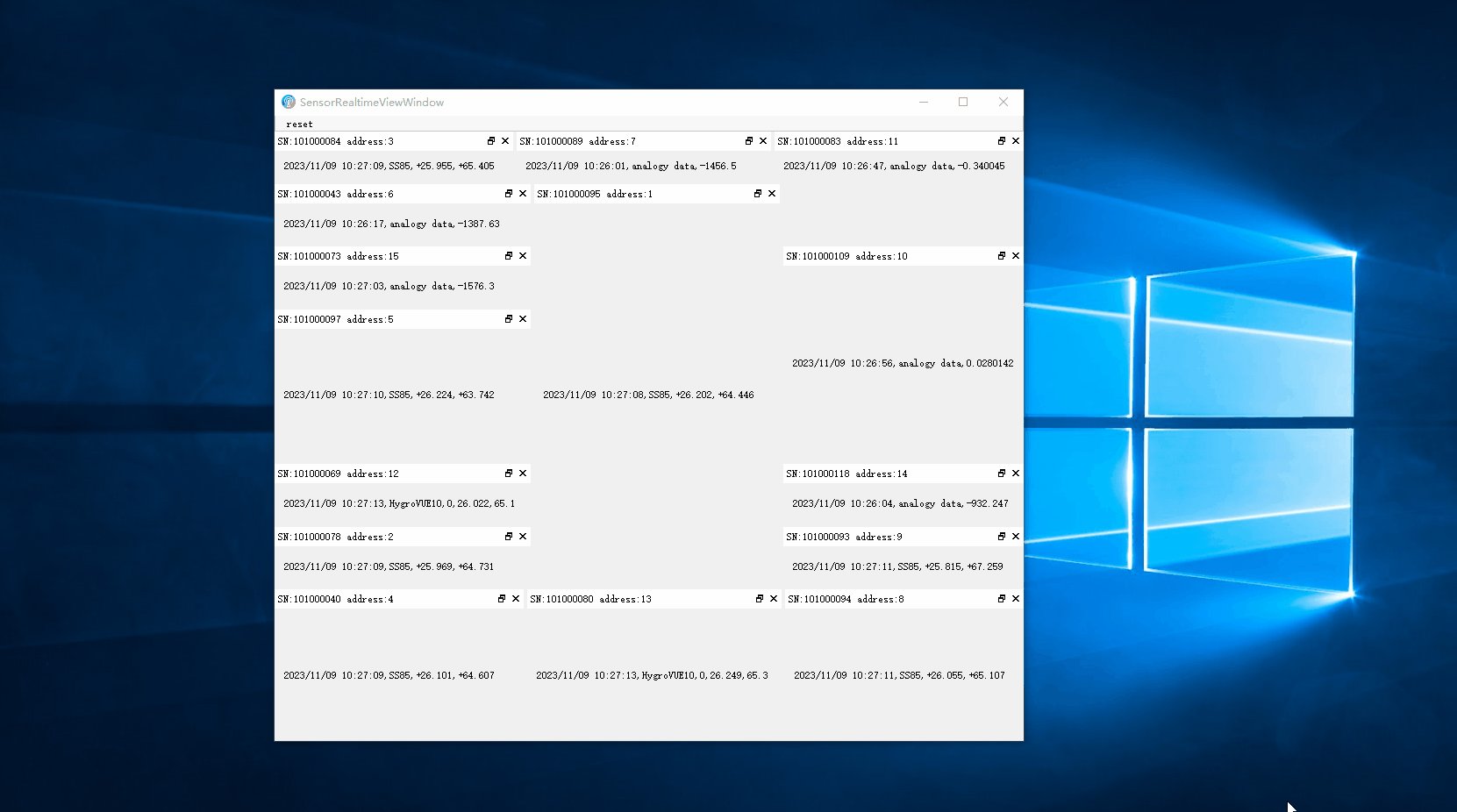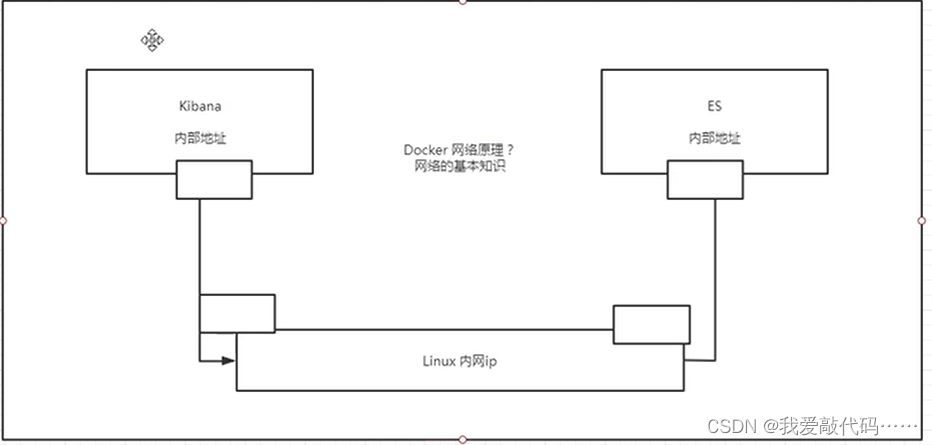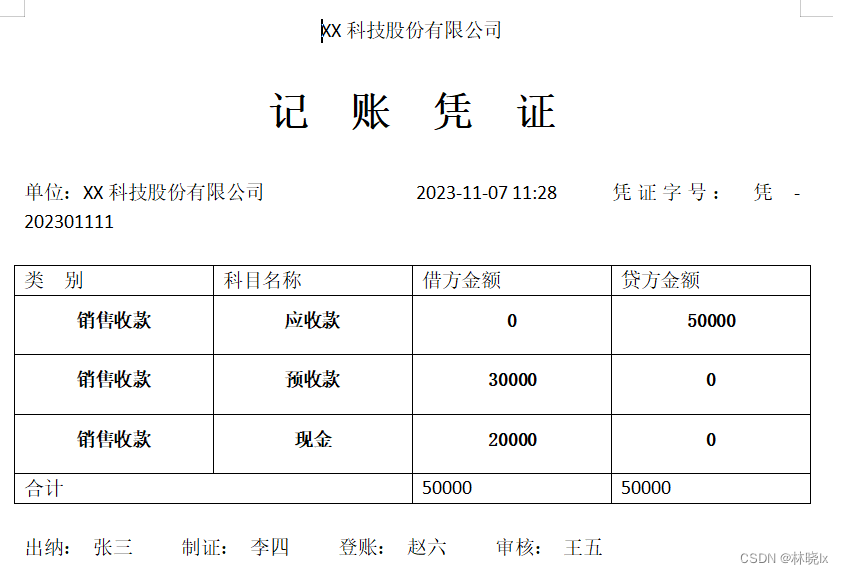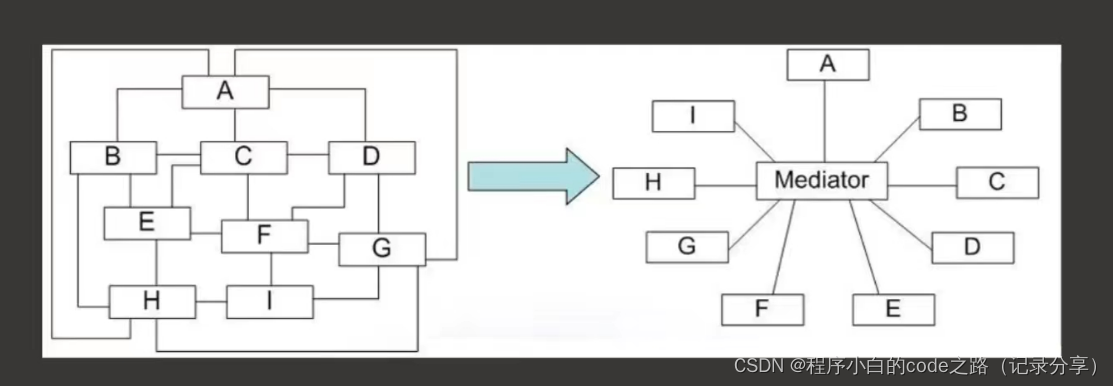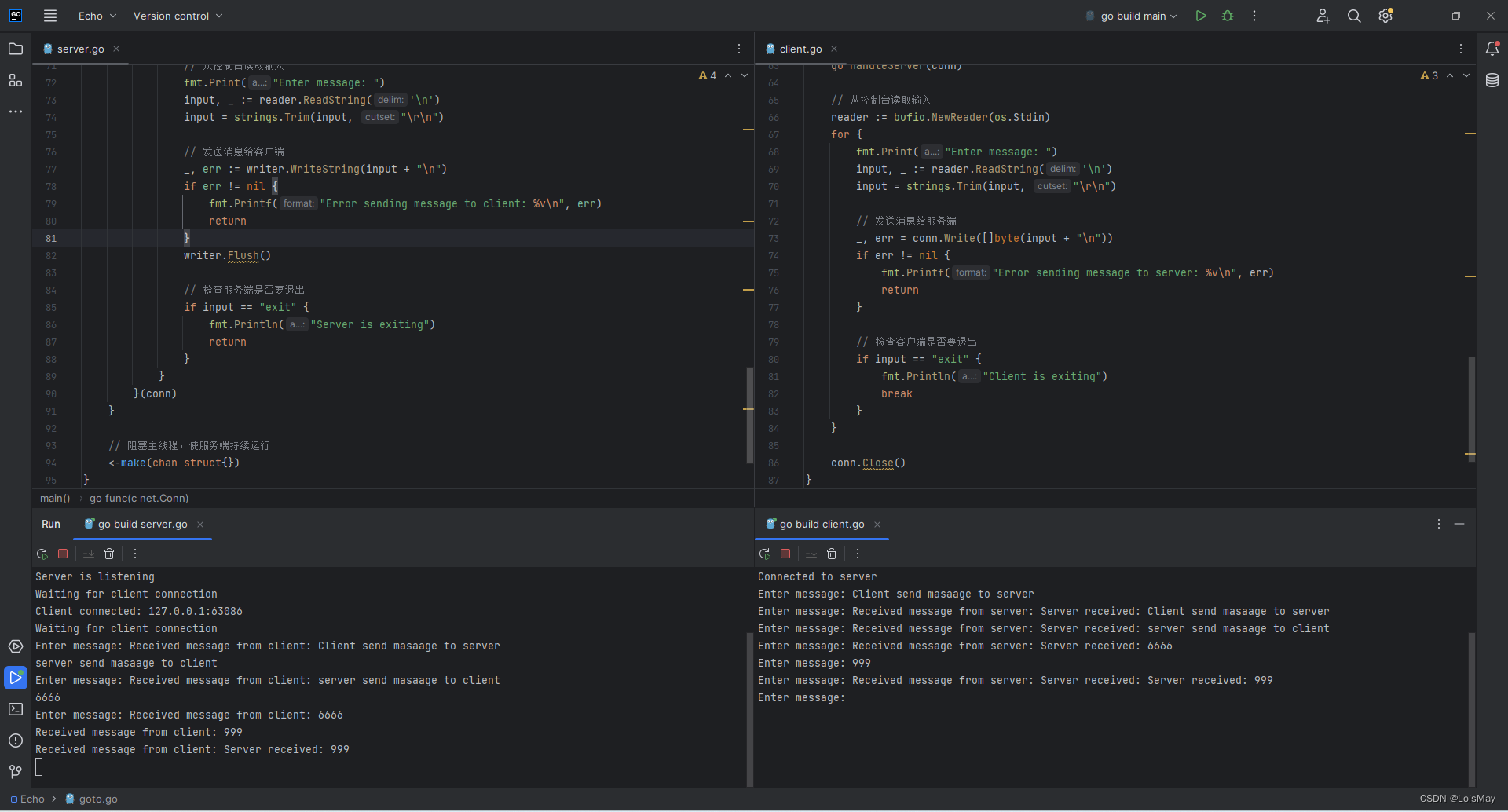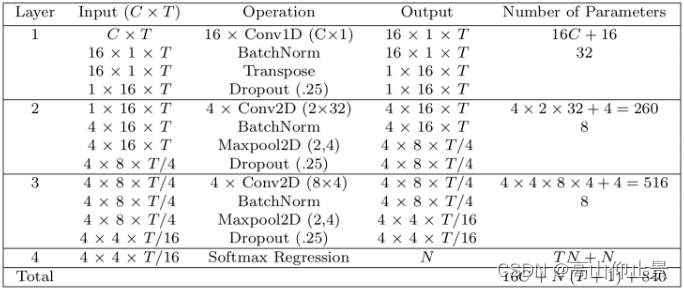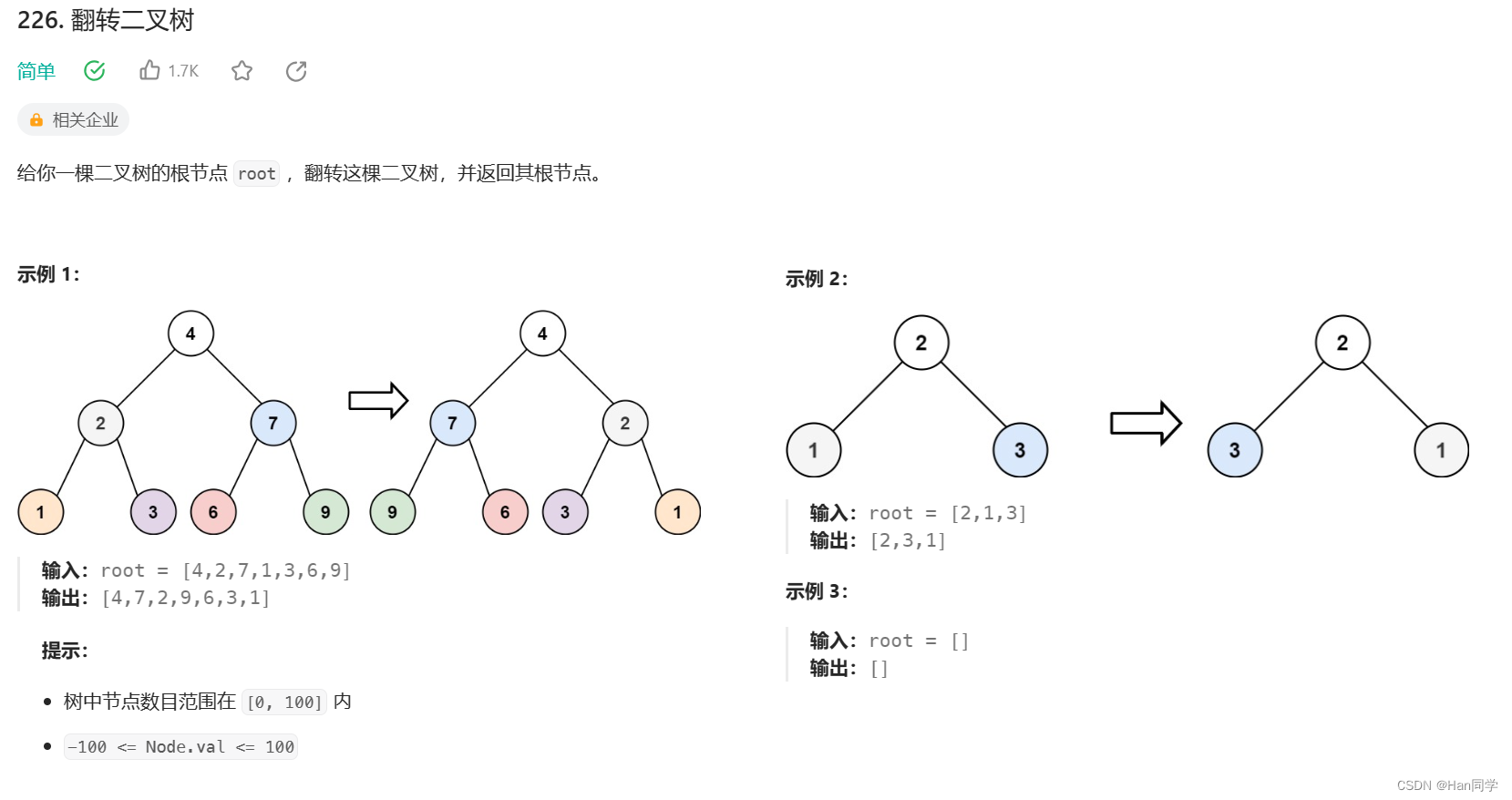博主创建了一个科研互助群Q:772356582,欢迎大家加入讨论。这是一个科研互助群,主要围绕机器人,无人驾驶,无人机方面的感知定位,决策规划,以及论文发表经验,以方便大家很好很快的科研,少走弯路。欢迎在群里积极提问与回答,相互交流共同学习。
一、简介
PL-VINS是基于最先进的基于点的VINS- mono,开发的一种基于点和线特征的实时、高效优化的单目VINS方法。原始的 PL-VINS 是在ubuntu18.04基于opencv3去开发的。源码的下载地址:https://github.com/cnqiangfu/PL-VINS
我的配置:ubuntu20.04+opencv4.2+eigen3.3.7
更改好的代码如下,可直接用,需要修改mage_node_b.cpp的main函数第一行的地址
huashu996/Ubuntu20.04PL_VINS · GitHub
二、编译
如果你使用官方的代码,编译时候可能会遇到如下问题
mkdir -p ~/catkin_plvins/src
cd catkin_plvins/src //进入创建的catkin_plvins/src文件夹下
catkin_init_workspace 进行空间创建
cd ~/catkin_plvins //在文件夹catkin_plvins下建立终端输入
catkin_make //终端输入
source devel/setup.bash
echo $ROS_PACKAGE_PATH
//将代码下载到src目录下 或者执行下面代码
cd ~/catkin_plvins/src
git clone https://github.com/cnqiangfu/PL-VINS.git
//编译
cd .. //回到文件夹catkin_plvins
catkin_make
source devel/setup.bash- 将feature_tracker里面的Cmakelist修改一下:主要修改以下2处的路径
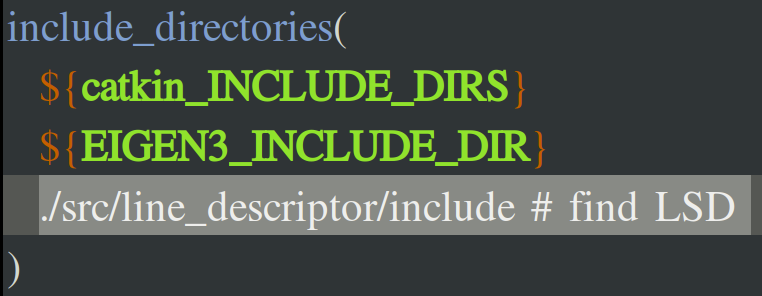

- 打开catkin_plvins/src/PL-VINS/image_node_b文件下的CMakeLists.txt添加
set(CMAKE_CXX_STANDARD 14)如果你配置正确,应该能够编译顺利通过
三、opencv4适配
但运行往往会出现如下图问题,对于每个问题我们一次解决
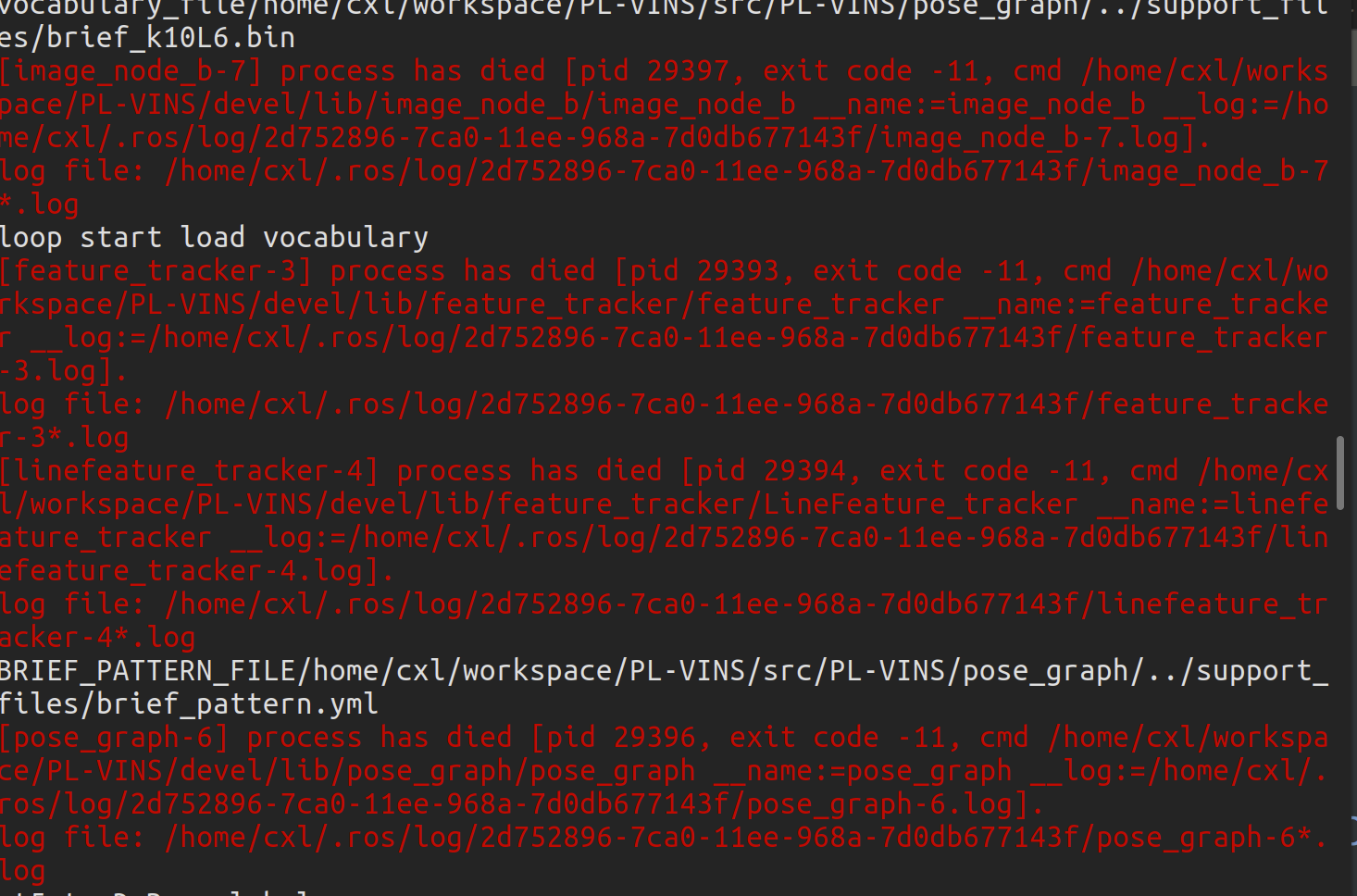
- [image_node_b-7] 挂掉的原因是linefeature_tracker_node中只发布了归一化坐标,没有发布linefeature的startpoint和endpoint的像素坐标。
1.mage_node_b.cpp的main函数第一行的地址,修改原绝对地址。

2.加入project函数
void project(cv::Point2f& pt, cv::Mat const& k)
{
pt.x=k.at<float>(0,0)*pt.x+k.at<float>(0,2);
pt.y=k.at<float>(1,1)*pt.y+k.at<float>(1,2);
}3.替换
将下面两行
cv::Point startPoint = cv::Point(line_feature_msg->channels[3].values[i], line_feature_msg->channels[4].values[i]);
cv::Point endPoint = cv::Point(line_feature_msg->channels[5].values[i], line_feature_msg->channels[6].values[i]);
替换
cv::Point2f startPoint = cv::Point2f(line_feature_msg->points[i].x,line_feature_msg->points[i].y );
project (startPoint,K_);
cv::Point2f endPoint = cv::Point2f(line_feature_msg->channels[1].values[i],line_feature_msg->channels[2].values[i]);- [linefeature_tracker-4]
此问题由于opencv和cv_bridge冲突的问题,因为在ubuntu20.04 cv_bridge是4,如果你使用opencv3那么将产生冲突,如果使用opencv4跑,代码本身又不支持opencv4所以需要更改。相应的解决方式也有两种:
1)把vins-mono代码全部改成opencv4的版本 或者 2)把cv_bridge改成opencv3版本。参考如下博客修改
【精选】Ubuntu20.04下成功运行VINS-mono_ubuntu vinsmono-CSDN博客
1.将所有包含opencv的Cmakelists.txt中opencv引入都换成4,如下

2.更新头文件使使用opencv4
(1)将camera_model包改成兼容opencv4
在camera_model包中的头文件Chessboard.h中添加
#include <opencv2/imgproc/types_c.h>
#include <opencv2/calib3d/calib3d_c.h>
在CameraCalibration.h中添加
#include <opencv2/imgproc/types_c.h>
#include <opencv2/imgproc/imgproc_c.h>
(2)将包中所有报错的头文件
#include <opencv/cv.h>
#include <opencv/highgui.h>
替换为
#include <opencv2/highgui.hpp>
#include <opencv2/cvconfig.h>
3.加入线特征检测函数
imgproc.hpp关于线特征的部分由于opencv4权限的问题无法使用了,这里只需要自己定义一个相同功能的头文件去把opencv3中的实现拷贝过去。在路径
PL-VINS/src/PL-VINS/feature_tracker/src/line_descriptor/src
创建一个my_lsd.hpp
//
// Created by fs on 2021/11/3.
// This file is my_lsd.hpp
//
//#include "opencv2/../../src/precomp.hpp"
#include "opencv2/imgproc.hpp"
//#include "opencv2/core/private.hpp"
#include <vector>
#define M_3_2_PI (3 * CV_PI) / 2 // 3/2 pi
#define M_2__PI (2 * CV_PI) // 2 pi
#ifndef M_LN10
#define M_LN10 2.30258509299404568402
#endif
#define NOTDEF double(-1024.0) // Label for pixels with undefined gradient.
#define NOTUSED 0 // Label for pixels not used in yet.
#define USED 1 // Label for pixels already used in detection.
#define RELATIVE_ERROR_FACTOR 100.0
const double DEG_TO_RADS = CV_PI / 180;
#define log_gamma(x) ((x)>15.0?log_gamma_windschitl(x):log_gamma_lanczos(x))
struct edge
{
cv::Point p;
bool taken;
};
inline double distSq(const double x1, const double y1,
const double x2, const double y2)
{
return (x2 - x1)*(x2 - x1) + (y2 - y1)*(y2 - y1);
}
inline double dist(const double x1, const double y1,
const double x2, const double y2)
{
return sqrt(distSq(x1, y1, x2, y2));
}
// Signed angle difference
inline double angle_diff_signed(const double& a, const double& b)
{
double diff = a - b;
while(diff <= -CV_PI) diff += M_2__PI;
while(diff > CV_PI) diff -= M_2__PI;
return diff;
}
// Absolute value angle difference
inline double angle_diff(const double& a, const double& b)
{
return std::fabs(angle_diff_signed(a, b));
}
// Compare doubles by relative error.
inline bool double_equal(const double& a, const double& b)
{
// trivial case
if(a == b) return true;
double abs_diff = fabs(a - b);
double aa = fabs(a);
double bb = fabs(b);
double abs_max = (aa > bb)? aa : bb;
if(abs_max < DBL_MIN) abs_max = DBL_MIN;
return (abs_diff / abs_max) <= (RELATIVE_ERROR_FACTOR * DBL_EPSILON);
}
inline bool AsmallerB_XoverY(const edge& a, const edge& b)
{
if (a.p.x == b.p.x) return a.p.y < b.p.y;
else return a.p.x < b.p.x;
}
/**
* Computes the natural logarithm of the absolute value of
* the gamma function of x using Windschitl method.
* See http://www.rskey.org/gamma.htm
*/
inline double log_gamma_windschitl(const double& x)
{
return 0.918938533204673 + (x-0.5)*log(x) - x
+ 0.5*x*log(x*sinh(1/x) + 1/(810.0*pow(x, 6.0)));
}
/**
* Computes the natural logarithm of the absolute value of
* the gamma function of x using the Lanczos approximation.
* See http://www.rskey.org/gamma.htm
*/
inline double log_gamma_lanczos(const double& x)
{
static double q[7] = { 75122.6331530, 80916.6278952, 36308.2951477,
8687.24529705, 1168.92649479, 83.8676043424,
2.50662827511 };
double a = (x + 0.5) * log(x + 5.5) - (x + 5.5);
double b = 0;
for(int n = 0; n < 7; ++n)
{
a -= log(x + double(n));
b += q[n] * pow(x, double(n));
}
return a + log(b);
}
///
namespace cv {
class myLineSegmentDetectorImpl CV_FINAL : public LineSegmentDetector
{
public:
/**
* Create a LineSegmentDetectorImpl object. Specifying scale, number of subdivisions for the image, should the lines be refined and other constants as follows:
*
* @param _refine How should the lines found be refined?
* LSD_REFINE_NONE - No refinement applied.
* LSD_REFINE_STD - Standard refinement is applied. E.g. breaking arches into smaller line approximations.
* LSD_REFINE_ADV - Advanced refinement. Number of false alarms is calculated,
* lines are refined through increase of precision, decrement in size, etc.
* @param _scale The scale of the image that will be used to find the lines. Range (0..1].
* @param _sigma_scale Sigma for Gaussian filter is computed as sigma = _sigma_scale/_scale.
* @param _quant Bound to the quantization error on the gradient norm.
* @param _ang_th Gradient angle tolerance in degrees.
* @param _log_eps Detection threshold: -log10(NFA) > _log_eps
* @param _density_th Minimal density of aligned region points in rectangle.
* @param _n_bins Number of bins in pseudo-ordering of gradient modulus.
*/
myLineSegmentDetectorImpl(int _refine = LSD_REFINE_STD, double _scale = 0.8,
double _sigma_scale = 0.6, double _quant = 2.0, double _ang_th = 22.5,
double _log_eps = 0, double _density_th = 0.7, int _n_bins = 1024);
/**
* Detect lines in the input image.
*
* @param _image A grayscale(CV_8UC1) input image.
* If only a roi needs to be selected, use
* lsd_ptr->detect(image(roi), ..., lines);
* lines += Scalar(roi.x, roi.y, roi.x, roi.y);
* @param _lines Return: A vector of Vec4i or Vec4f elements specifying the beginning and ending point of a line.
* Where Vec4i/Vec4f is (x1, y1, x2, y2), point 1 is the start, point 2 - end.
* Returned lines are strictly oriented depending on the gradient.
* @param width Return: Vector of widths of the regions, where the lines are found. E.g. Width of line.
* @param prec Return: Vector of precisions with which the lines are found.
* @param nfa Return: Vector containing number of false alarms in the line region, with precision of 10%.
* The bigger the value, logarithmically better the detection.
* * -1 corresponds to 10 mean false alarms
* * 0 corresponds to 1 mean false alarm
* * 1 corresponds to 0.1 mean false alarms
* This vector will be calculated _only_ when the objects type is REFINE_ADV
*/
void detect(InputArray _image, OutputArray _lines,
OutputArray width = noArray(), OutputArray prec = noArray(),
OutputArray nfa = noArray()) CV_OVERRIDE;
/**
* Draw lines on the given canvas.
*
* @param image The image, where lines will be drawn.
* Should have the size of the image, where the lines were found
* @param lines The lines that need to be drawn
*/
void drawSegments(InputOutputArray _image, InputArray lines) CV_OVERRIDE;
/**
* Draw both vectors on the image canvas. Uses blue for lines 1 and red for lines 2.
*
* @param size The size of the image, where lines1 and lines2 were found.
* @param lines1 The first lines that need to be drawn. Color - Blue.
* @param lines2 The second lines that need to be drawn. Color - Red.
* @param image An optional image, where lines will be drawn.
* Should have the size of the image, where the lines were found
* @return The number of mismatching pixels between lines1 and lines2.
*/
int compareSegments(const Size& size, InputArray lines1, InputArray lines2, InputOutputArray _image = noArray()) CV_OVERRIDE;
private:
Mat image;
Mat scaled_image;
Mat_<double> angles; // in rads
Mat_<double> modgrad;
Mat_<uchar> used;
int img_width;
int img_height;
double LOG_NT;
bool w_needed;
bool p_needed;
bool n_needed;
const double SCALE;
const int doRefine;
const double SIGMA_SCALE;
const double QUANT;
const double ANG_TH;
const double LOG_EPS;
const double DENSITY_TH;
const int N_BINS;
struct RegionPoint {
int x;
int y;
uchar* used;
double angle;
double modgrad;
};
struct normPoint
{
Point2i p;
int norm;
};
std::vector<normPoint> ordered_points;
struct rect
{
double x1, y1, x2, y2; // first and second point of the line segment
double width; // rectangle width
double x, y; // center of the rectangle
double theta; // angle
double dx,dy; // (dx,dy) is vector oriented as the line segment
double prec; // tolerance angle
double p; // probability of a point with angle within 'prec'
};
myLineSegmentDetectorImpl& operator= (const myLineSegmentDetectorImpl&); // to quiet MSVC
/**
* Detect lines in the whole input image.
*
* @param lines Return: A vector of Vec4f elements specifying the beginning and ending point of a line.
* Where Vec4f is (x1, y1, x2, y2), point 1 is the start, point 2 - end.
* Returned lines are strictly oriented depending on the gradient.
* @param widths Return: Vector of widths of the regions, where the lines are found. E.g. Width of line.
* @param precisions Return: Vector of precisions with which the lines are found.
* @param nfas Return: Vector containing number of false alarms in the line region, with precision of 10%.
* The bigger the value, logarithmically better the detection.
* * -1 corresponds to 10 mean false alarms
* * 0 corresponds to 1 mean false alarm
* * 1 corresponds to 0.1 mean false alarms
*/
void flsd(std::vector<Vec4f>& lines,
std::vector<double>& widths, std::vector<double>& precisions,
std::vector<double>& nfas);
/**
* Finds the angles and the gradients of the image. Generates a list of pseudo ordered points.
*
* @param threshold The minimum value of the angle that is considered defined, otherwise NOTDEF
* @param n_bins The number of bins with which gradients are ordered by, using bucket sort.
* @param ordered_points Return: Vector of coordinate points that are pseudo ordered by magnitude.
* Pixels would be ordered by norm value, up to a precision given by max_grad/n_bins.
*/
void ll_angle(const double& threshold, const unsigned int& n_bins);
/**
* Grow a region starting from point s with a defined precision,
* returning the containing points size and the angle of the gradients.
*
* @param s Starting point for the region.
* @param reg Return: Vector of points, that are part of the region
* @param reg_angle Return: The mean angle of the region.
* @param prec The precision by which each region angle should be aligned to the mean.
*/
void region_grow(const Point2i& s, std::vector<RegionPoint>& reg,
double& reg_angle, const double& prec);
/**
* Finds the bounding rotated rectangle of a region.
*
* @param reg The region of points, from which the rectangle to be constructed from.
* @param reg_angle The mean angle of the region.
* @param prec The precision by which points were found.
* @param p Probability of a point with angle within 'prec'.
* @param rec Return: The generated rectangle.
*/
void region2rect(const std::vector<RegionPoint>& reg, const double reg_angle,
const double prec, const double p, rect& rec) const;
/**
* Compute region's angle as the principal inertia axis of the region.
* @return Regions angle.
*/
double get_theta(const std::vector<RegionPoint>& reg, const double& x,
const double& y, const double& reg_angle, const double& prec) const;
/**
* An estimation of the angle tolerance is performed by the standard deviation of the angle at points
* near the region's starting point. Then, a new region is grown starting from the same point, but using the
* estimated angle tolerance. If this fails to produce a rectangle with the right density of region points,
* 'reduce_region_radius' is called to try to satisfy this condition.
*/
bool refine(std::vector<RegionPoint>& reg, double reg_angle,
const double prec, double p, rect& rec, const double& density_th);
/**
* Reduce the region size, by elimination the points far from the starting point, until that leads to
* rectangle with the right density of region points or to discard the region if too small.
*/
bool reduce_region_radius(std::vector<RegionPoint>& reg, double reg_angle,
const double prec, double p, rect& rec, double density, const double& density_th);
/**
* Try some rectangles variations to improve NFA value. Only if the rectangle is not meaningful (i.e., log_nfa <= log_eps).
* @return The new NFA value.
*/
double rect_improve(rect& rec) const;
/**
* Calculates the number of correctly aligned points within the rectangle.
* @return The new NFA value.
*/
double rect_nfa(const rect& rec) const;
/**
* Computes the NFA values based on the total number of points, points that agree.
* n, k, p are the binomial parameters.
* @return The new NFA value.
*/
double nfa(const int& n, const int& k, const double& p) const;
/**
* Is the point at place 'address' aligned to angle theta, up to precision 'prec'?
* @return Whether the point is aligned.
*/
bool isAligned(int x, int y, const double& theta, const double& prec) const;
public:
// Compare norm
static inline bool compare_norm( const normPoint& n1, const normPoint& n2 )
{
return (n1.norm > n2.norm);
}
};
CV_EXPORTS Ptr<LineSegmentDetector> createLineSegmentDetector(
int _refine, double _scale, double _sigma_scale, double _quant, double _ang_th,
double _log_eps, double _density_th, int _n_bins)
{
return makePtr<myLineSegmentDetectorImpl>(
_refine, _scale, _sigma_scale, _quant, _ang_th,
_log_eps, _density_th, _n_bins);
}
myLineSegmentDetectorImpl::myLineSegmentDetectorImpl(int _refine, double _scale, double _sigma_scale, double _quant,
double _ang_th, double _log_eps, double _density_th, int _n_bins)
:img_width(0), img_height(0), LOG_NT(0), w_needed(false), p_needed(false), n_needed(false),
SCALE(_scale), doRefine(_refine), SIGMA_SCALE(_sigma_scale), QUANT(_quant),
ANG_TH(_ang_th), LOG_EPS(_log_eps), DENSITY_TH(_density_th), N_BINS(_n_bins)
{
CV_Assert(_scale > 0 && _sigma_scale > 0 && _quant >= 0 &&
_ang_th > 0 && _ang_th < 180 && _density_th >= 0 && _density_th < 1 &&
_n_bins > 0);
// CV_UNUSED(_refine); CV_UNUSED(_log_eps);
// CV_Error(Error::StsNotImplemented, "Implementation has been removed due original code license issues");
}
void myLineSegmentDetectorImpl::detect(InputArray _image, OutputArray _lines,
OutputArray _width, OutputArray _prec, OutputArray _nfa)
{
// CV_INSTRUMENT_REGION();
image = _image.getMat();
CV_Assert(!image.empty() && image.type() == CV_8UC1);
std::vector<Vec4f> lines;
std::vector<double> w, p, n;
w_needed = _width.needed();
p_needed = _prec.needed();
if (doRefine < LSD_REFINE_ADV)
n_needed = false;
else
n_needed = _nfa.needed();
flsd(lines, w, p, n);
Mat(lines).copyTo(_lines);
if(w_needed) Mat(w).copyTo(_width);
if(p_needed) Mat(p).copyTo(_prec);
if(n_needed) Mat(n).copyTo(_nfa);
// Clear used structures
ordered_points.clear();
// CV_UNUSED(_image); CV_UNUSED(_lines);
// CV_UNUSED(_width); CV_UNUSED(_prec); CV_UNUSED(_nfa);
// CV_Error(Error::StsNotImplemented, "Implementation has been removed due original code license issues");
}
void myLineSegmentDetectorImpl::drawSegments(InputOutputArray _image, InputArray lines)
{
// CV_INSTRUMENT_REGION();
CV_Assert(!_image.empty() && (_image.channels() == 1 || _image.channels() == 3));
if (_image.channels() == 1)
{
cvtColor(_image, _image, COLOR_GRAY2BGR);
}
Mat _lines = lines.getMat();
const int N = _lines.checkVector(4);
CV_Assert(_lines.depth() == CV_32F || _lines.depth() == CV_32S);
// Draw segments
if (_lines.depth() == CV_32F)
{
for (int i = 0; i < N; ++i)
{
const Vec4f& v = _lines.at<Vec4f>(i);
const Point2f b(v[0], v[1]);
const Point2f e(v[2], v[3]);
line(_image, b, e, Scalar(0, 0, 255), 1);
}
}
else
{
for (int i = 0; i < N; ++i)
{
const Vec4i& v = _lines.at<Vec4i>(i);
const Point2i b(v[0], v[1]);
const Point2i e(v[2], v[3]);
line(_image, b, e, Scalar(0, 0, 255), 1);
}
}
}
int myLineSegmentDetectorImpl::compareSegments(const Size& size, InputArray lines1, InputArray lines2, InputOutputArray _image)
{
// CV_INSTRUMENT_REGION();
Size sz = size;
if (_image.needed() && _image.size() != size) sz = _image.size();
CV_Assert(!sz.empty());
Mat_<uchar> I1 = Mat_<uchar>::zeros(sz);
Mat_<uchar> I2 = Mat_<uchar>::zeros(sz);
Mat _lines1 = lines1.getMat();
Mat _lines2 = lines2.getMat();
const int N1 = _lines1.checkVector(4);
const int N2 = _lines2.checkVector(4);
CV_Assert(_lines1.depth() == CV_32F || _lines1.depth() == CV_32S);
CV_Assert(_lines2.depth() == CV_32F || _lines2.depth() == CV_32S);
if (_lines1.depth() == CV_32S)
_lines1.convertTo(_lines1, CV_32F);
if (_lines2.depth() == CV_32S)
_lines2.convertTo(_lines2, CV_32F);
// Draw segments
for(int i = 0; i < N1; ++i)
{
const Point2f b(_lines1.at<Vec4f>(i)[0], _lines1.at<Vec4f>(i)[1]);
const Point2f e(_lines1.at<Vec4f>(i)[2], _lines1.at<Vec4f>(i)[3]);
line(I1, b, e, Scalar::all(255), 1);
}
for(int i = 0; i < N2; ++i)
{
const Point2f b(_lines2.at<Vec4f>(i)[0], _lines2.at<Vec4f>(i)[1]);
const Point2f e(_lines2.at<Vec4f>(i)[2], _lines2.at<Vec4f>(i)[3]);
line(I2, b, e, Scalar::all(255), 1);
}
// Count the pixels that don't agree
Mat Ixor;
bitwise_xor(I1, I2, Ixor);
int N = countNonZero(Ixor);
if (_image.needed())
{
CV_Assert(_image.channels() == 3);
Mat img = _image.getMatRef();
CV_Assert(img.isContinuous() && I1.isContinuous() && I2.isContinuous());
for (unsigned int i = 0; i < I1.total(); ++i)
{
uchar i1 = I1.ptr()[i];
uchar i2 = I2.ptr()[i];
if (i1 || i2)
{
unsigned int base_idx = i * 3;
if (i1) img.ptr()[base_idx] = 255;
else img.ptr()[base_idx] = 0;
img.ptr()[base_idx + 1] = 0;
if (i2) img.ptr()[base_idx + 2] = 255;
else img.ptr()[base_idx + 2] = 0;
}
}
}
return N;
}
void myLineSegmentDetectorImpl::flsd(std::vector<Vec4f>& lines,
std::vector<double>& widths, std::vector<double>& precisions,
std::vector<double>& nfas)
{
// Angle tolerance
const double prec = CV_PI * ANG_TH / 180;
const double p = ANG_TH / 180;
const double rho = QUANT / sin(prec); // gradient magnitude threshold
if(SCALE != 1)
{
Mat gaussian_img;
const double sigma = (SCALE < 1)?(SIGMA_SCALE / SCALE):(SIGMA_SCALE);
const double sprec = 3;
const unsigned int h = (unsigned int)(ceil(sigma * sqrt(2 * sprec * log(10.0))));
Size ksize(1 + 2 * h, 1 + 2 * h); // kernel size
GaussianBlur(image, gaussian_img, ksize, sigma);
// Scale image to needed size
resize(gaussian_img, scaled_image, Size(), SCALE, SCALE, INTER_LINEAR_EXACT);
ll_angle(rho, N_BINS);
}
else
{
scaled_image = image;
ll_angle(rho, N_BINS);
}
LOG_NT = 5 * (log10(double(img_width)) + log10(double(img_height))) / 2 + log10(11.0);
const size_t min_reg_size = size_t(-LOG_NT/log10(p)); // minimal number of points in region that can give a meaningful event
// // Initialize region only when needed
// Mat region = Mat::zeros(scaled_image.size(), CV_8UC1);
used = Mat_<uchar>::zeros(scaled_image.size()); // zeros = NOTUSED
std::vector<RegionPoint> reg;
// Search for line segments
for(size_t i = 0, points_size = ordered_points.size(); i < points_size; ++i)
{
const Point2i& point = ordered_points[i].p;
if((used.at<uchar>(point) == NOTUSED) && (angles.at<double>(point) != NOTDEF))
{
double reg_angle;
region_grow(ordered_points[i].p, reg, reg_angle, prec);
// Ignore small regions
if(reg.size() < min_reg_size) { continue; }
// Construct rectangular approximation for the region
rect rec;
region2rect(reg, reg_angle, prec, p, rec);
double log_nfa = -1;
if(doRefine > LSD_REFINE_NONE)
{
// At least REFINE_STANDARD lvl.
if(!refine(reg, reg_angle, prec, p, rec, DENSITY_TH)) { continue; }
if(doRefine >= LSD_REFINE_ADV)
{
// Compute NFA
log_nfa = rect_improve(rec);
if(log_nfa <= LOG_EPS) { continue; }
}
}
// Found new line
// Add the offset
rec.x1 += 0.5; rec.y1 += 0.5;
rec.x2 += 0.5; rec.y2 += 0.5;
// scale the result values if a sub-sampling was performed
if(SCALE != 1)
{
rec.x1 /= SCALE; rec.y1 /= SCALE;
rec.x2 /= SCALE; rec.y2 /= SCALE;
rec.width /= SCALE;
}
//Store the relevant data
lines.push_back(Vec4f(float(rec.x1), float(rec.y1), float(rec.x2), float(rec.y2)));
if(w_needed) widths.push_back(rec.width);
if(p_needed) precisions.push_back(rec.p);
if(n_needed && doRefine >= LSD_REFINE_ADV) nfas.push_back(log_nfa);
}
}
}
void myLineSegmentDetectorImpl::ll_angle(const double& threshold,
const unsigned int& n_bins)
{
//Initialize data
angles = Mat_<double>(scaled_image.size());
modgrad = Mat_<double>(scaled_image.size());
img_width = scaled_image.cols;
img_height = scaled_image.rows;
// Undefined the down and right boundaries
angles.row(img_height - 1).setTo(NOTDEF);
angles.col(img_width - 1).setTo(NOTDEF);
// Computing gradient for remaining pixels
double max_grad = -1;
for(int y = 0; y < img_height - 1; ++y)
{
const uchar* scaled_image_row = scaled_image.ptr<uchar>(y);
const uchar* next_scaled_image_row = scaled_image.ptr<uchar>(y+1);
double* angles_row = angles.ptr<double>(y);
double* modgrad_row = modgrad.ptr<double>(y);
for(int x = 0; x < img_width-1; ++x)
{
int DA = next_scaled_image_row[x + 1] - scaled_image_row[x];
int BC = scaled_image_row[x + 1] - next_scaled_image_row[x];
int gx = DA + BC; // gradient x component
int gy = DA - BC; // gradient y component
double norm = std::sqrt((gx * gx + gy * gy) / 4.0); // gradient norm
modgrad_row[x] = norm; // store gradient
if (norm <= threshold) // norm too small, gradient no defined
{
angles_row[x] = NOTDEF;
}
else
{
angles_row[x] = fastAtan2(float(gx), float(-gy)) * DEG_TO_RADS; // gradient angle computation
if (norm > max_grad) { max_grad = norm; }
}
}
}
// Compute histogram of gradient values
double bin_coef = (max_grad > 0) ? double(n_bins - 1) / max_grad : 0; // If all image is smooth, max_grad <= 0
for(int y = 0; y < img_height - 1; ++y)
{
const double* modgrad_row = modgrad.ptr<double>(y);
for(int x = 0; x < img_width - 1; ++x)
{
normPoint _point;
int i = int(modgrad_row[x] * bin_coef);
_point.p = Point(x, y);
_point.norm = i;
ordered_points.push_back(_point);
}
}
// Sort
std::sort(ordered_points.begin(), ordered_points.end(), compare_norm);
}
void myLineSegmentDetectorImpl::region_grow(const Point2i& s, std::vector<RegionPoint>& reg,
double& reg_angle, const double& prec)
{
reg.clear();
// Point to this region
RegionPoint seed;
seed.x = s.x;
seed.y = s.y;
seed.used = &used.at<uchar>(s);
reg_angle = angles.at<double>(s);
seed.angle = reg_angle;
seed.modgrad = modgrad.at<double>(s);
reg.push_back(seed);
float sumdx = float(std::cos(reg_angle));
float sumdy = float(std::sin(reg_angle));
*seed.used = USED;
//Try neighboring regions
for (size_t i = 0;i<reg.size();i++)
{
const RegionPoint& rpoint = reg[i];
int xx_min = std::max(rpoint.x - 1, 0), xx_max = std::min(rpoint.x + 1, img_width - 1);
int yy_min = std::max(rpoint.y - 1, 0), yy_max = std::min(rpoint.y + 1, img_height - 1);
for(int yy = yy_min; yy <= yy_max; ++yy)
{
uchar* used_row = used.ptr<uchar>(yy);
const double* angles_row = angles.ptr<double>(yy);
const double* modgrad_row = modgrad.ptr<double>(yy);
for(int xx = xx_min; xx <= xx_max; ++xx)
{
uchar& is_used = used_row[xx];
if(is_used != USED &&
(isAligned(xx, yy, reg_angle, prec)))
{
const double& angle = angles_row[xx];
// Add point
is_used = USED;
RegionPoint region_point;
region_point.x = xx;
region_point.y = yy;
region_point.used = &is_used;
region_point.modgrad = modgrad_row[xx];
region_point.angle = angle;
reg.push_back(region_point);
// Update region's angle
sumdx += cos(float(angle));
sumdy += sin(float(angle));
// reg_angle is used in the isAligned, so it needs to be updates?
reg_angle = fastAtan2(sumdy, sumdx) * DEG_TO_RADS;
}
}
}
}
}
void myLineSegmentDetectorImpl::region2rect(const std::vector<RegionPoint>& reg,
const double reg_angle, const double prec, const double p, rect& rec) const
{
double x = 0, y = 0, sum = 0;
for(size_t i = 0; i < reg.size(); ++i)
{
const RegionPoint& pnt = reg[i];
const double& weight = pnt.modgrad;
x += double(pnt.x) * weight;
y += double(pnt.y) * weight;
sum += weight;
}
// Weighted sum must differ from 0
CV_Assert(sum > 0);
x /= sum;
y /= sum;
double theta = get_theta(reg, x, y, reg_angle, prec);
// Find length and width
double dx = cos(theta);
double dy = sin(theta);
double l_min = 0, l_max = 0, w_min = 0, w_max = 0;
for(size_t i = 0; i < reg.size(); ++i)
{
double regdx = double(reg[i].x) - x;
double regdy = double(reg[i].y) - y;
double l = regdx * dx + regdy * dy;
double w = -regdx * dy + regdy * dx;
if(l > l_max) l_max = l;
else if(l < l_min) l_min = l;
if(w > w_max) w_max = w;
else if(w < w_min) w_min = w;
}
// Store values
rec.x1 = x + l_min * dx;
rec.y1 = y + l_min * dy;
rec.x2 = x + l_max * dx;
rec.y2 = y + l_max * dy;
rec.width = w_max - w_min;
rec.x = x;
rec.y = y;
rec.theta = theta;
rec.dx = dx;
rec.dy = dy;
rec.prec = prec;
rec.p = p;
// Min width of 1 pixel
if(rec.width < 1.0) rec.width = 1.0;
}
double myLineSegmentDetectorImpl::get_theta(const std::vector<RegionPoint>& reg, const double& x,
const double& y, const double& reg_angle, const double& prec) const
{
double Ixx = 0.0;
double Iyy = 0.0;
double Ixy = 0.0;
// Compute inertia matrix
for(size_t i = 0; i < reg.size(); ++i)
{
const double& regx = reg[i].x;
const double& regy = reg[i].y;
const double& weight = reg[i].modgrad;
double dx = regx - x;
double dy = regy - y;
Ixx += dy * dy * weight;
Iyy += dx * dx * weight;
Ixy -= dx * dy * weight;
}
// Check if inertia matrix is null
CV_Assert(!(double_equal(Ixx, 0) && double_equal(Iyy, 0) && double_equal(Ixy, 0)));
// Compute smallest eigenvalue
double lambda = 0.5 * (Ixx + Iyy - sqrt((Ixx - Iyy) * (Ixx - Iyy) + 4.0 * Ixy * Ixy));
// Compute angle
double theta = (fabs(Ixx)>fabs(Iyy))?
double(fastAtan2(float(lambda - Ixx), float(Ixy))):
double(fastAtan2(float(Ixy), float(lambda - Iyy))); // in degs
theta *= DEG_TO_RADS;
// Correct angle by 180 deg if necessary
if(angle_diff(theta, reg_angle) > prec) { theta += CV_PI; }
return theta;
}
bool myLineSegmentDetectorImpl::refine(std::vector<RegionPoint>& reg, double reg_angle,
const double prec, double p, rect& rec, const double& density_th)
{
double density = double(reg.size()) / (dist(rec.x1, rec.y1, rec.x2, rec.y2) * rec.width);
if (density >= density_th) { return true; }
// Try to reduce angle tolerance
double xc = double(reg[0].x);
double yc = double(reg[0].y);
const double& ang_c = reg[0].angle;
double sum = 0, s_sum = 0;
int n = 0;
for (size_t i = 0; i < reg.size(); ++i)
{
*(reg[i].used) = NOTUSED;
if (dist(xc, yc, reg[i].x, reg[i].y) < rec.width)
{
const double& angle = reg[i].angle;
double ang_d = angle_diff_signed(angle, ang_c);
sum += ang_d;
s_sum += ang_d * ang_d;
++n;
}
}
CV_Assert(n > 0);
double mean_angle = sum / double(n);
// 2 * standard deviation
double tau = 2.0 * sqrt((s_sum - 2.0 * mean_angle * sum) / double(n) + mean_angle * mean_angle);
// Try new region
region_grow(Point(reg[0].x, reg[0].y), reg, reg_angle, tau);
if (reg.size() < 2) { return false; }
region2rect(reg, reg_angle, prec, p, rec);
density = double(reg.size()) / (dist(rec.x1, rec.y1, rec.x2, rec.y2) * rec.width);
if (density < density_th)
{
return reduce_region_radius(reg, reg_angle, prec, p, rec, density, density_th);
}
else
{
return true;
}
}
bool myLineSegmentDetectorImpl::reduce_region_radius(std::vector<RegionPoint>& reg, double reg_angle,
const double prec, double p, rect& rec, double density, const double& density_th)
{
// Compute region's radius
double xc = double(reg[0].x);
double yc = double(reg[0].y);
double radSq1 = distSq(xc, yc, rec.x1, rec.y1);
double radSq2 = distSq(xc, yc, rec.x2, rec.y2);
double radSq = radSq1 > radSq2 ? radSq1 : radSq2;
while(density < density_th)
{
radSq *= 0.75*0.75; // Reduce region's radius to 75% of its value
// Remove points from the region and update 'used' map
for (size_t i = 0; i < reg.size(); ++i)
{
if(distSq(xc, yc, double(reg[i].x), double(reg[i].y)) > radSq)
{
// Remove point from the region
*(reg[i].used) = NOTUSED;
std::swap(reg[i], reg[reg.size() - 1]);
reg.pop_back();
--i; // To avoid skipping one point
}
}
if(reg.size() < 2) { return false; }
// Re-compute rectangle
region2rect(reg ,reg_angle, prec, p, rec);
// Re-compute region points density
density = double(reg.size()) /
(dist(rec.x1, rec.y1, rec.x2, rec.y2) * rec.width);
}
return true;
}
double myLineSegmentDetectorImpl::rect_improve(rect& rec) const
{
double delta = 0.5;
double delta_2 = delta / 2.0;
double log_nfa = rect_nfa(rec);
if(log_nfa > LOG_EPS) return log_nfa; // Good rectangle
// Try to improve
// Finer precision
rect r = rect(rec); // Copy
for(int n = 0; n < 5; ++n)
{
r.p /= 2;
r.prec = r.p * CV_PI;
double log_nfa_new = rect_nfa(r);
if(log_nfa_new > log_nfa)
{
log_nfa = log_nfa_new;
rec = rect(r);
}
}
if(log_nfa > LOG_EPS) return log_nfa;
// Try to reduce width
r = rect(rec);
for(unsigned int n = 0; n < 5; ++n)
{
if((r.width - delta) >= 0.5)
{
r.width -= delta;
double log_nfa_new = rect_nfa(r);
if(log_nfa_new > log_nfa)
{
rec = rect(r);
log_nfa = log_nfa_new;
}
}
}
if(log_nfa > LOG_EPS) return log_nfa;
// Try to reduce one side of rectangle
r = rect(rec);
for(unsigned int n = 0; n < 5; ++n)
{
if((r.width - delta) >= 0.5)
{
r.x1 += -r.dy * delta_2;
r.y1 += r.dx * delta_2;
r.x2 += -r.dy * delta_2;
r.y2 += r.dx * delta_2;
r.width -= delta;
double log_nfa_new = rect_nfa(r);
if(log_nfa_new > log_nfa)
{
rec = rect(r);
log_nfa = log_nfa_new;
}
}
}
if(log_nfa > LOG_EPS) return log_nfa;
// Try to reduce other side of rectangle
r = rect(rec);
for(unsigned int n = 0; n < 5; ++n)
{
if((r.width - delta) >= 0.5)
{
r.x1 -= -r.dy * delta_2;
r.y1 -= r.dx * delta_2;
r.x2 -= -r.dy * delta_2;
r.y2 -= r.dx * delta_2;
r.width -= delta;
double log_nfa_new = rect_nfa(r);
if(log_nfa_new > log_nfa)
{
rec = rect(r);
log_nfa = log_nfa_new;
}
}
}
if(log_nfa > LOG_EPS) return log_nfa;
// Try finer precision
r = rect(rec);
for(unsigned int n = 0; n < 5; ++n)
{
if((r.width - delta) >= 0.5)
{
r.p /= 2;
r.prec = r.p * CV_PI;
double log_nfa_new = rect_nfa(r);
if(log_nfa_new > log_nfa)
{
rec = rect(r);
log_nfa = log_nfa_new;
}
}
}
return log_nfa;
}
double myLineSegmentDetectorImpl::rect_nfa(const rect& rec) const
{
int total_pts = 0, alg_pts = 0;
double half_width = rec.width / 2.0;
double dyhw = rec.dy * half_width;
double dxhw = rec.dx * half_width;
edge ordered_x[4];
edge* min_y = &ordered_x[0];
edge* max_y = &ordered_x[0]; // Will be used for loop range
ordered_x[0].p.x = int(rec.x1 - dyhw); ordered_x[0].p.y = int(rec.y1 + dxhw); ordered_x[0].taken = false;
ordered_x[1].p.x = int(rec.x2 - dyhw); ordered_x[1].p.y = int(rec.y2 + dxhw); ordered_x[1].taken = false;
ordered_x[2].p.x = int(rec.x2 + dyhw); ordered_x[2].p.y = int(rec.y2 - dxhw); ordered_x[2].taken = false;
ordered_x[3].p.x = int(rec.x1 + dyhw); ordered_x[3].p.y = int(rec.y1 - dxhw); ordered_x[3].taken = false;
std::sort(ordered_x, ordered_x + 4, AsmallerB_XoverY);
// Find min y. And mark as taken. find max y.
for(unsigned int i = 1; i < 4; ++i)
{
if(min_y->p.y > ordered_x[i].p.y) {min_y = &ordered_x[i]; }
if(max_y->p.y < ordered_x[i].p.y) {max_y = &ordered_x[i]; }
}
min_y->taken = true;
// Find leftmost untaken point;
edge* leftmost = 0;
for(unsigned int i = 0; i < 4; ++i)
{
if(!ordered_x[i].taken)
{
if(!leftmost) // if uninitialized
{
leftmost = &ordered_x[i];
}
else if (leftmost->p.x > ordered_x[i].p.x)
{
leftmost = &ordered_x[i];
}
}
}
CV_Assert(leftmost != NULL);
leftmost->taken = true;
// Find rightmost untaken point;
edge* rightmost = 0;
for(unsigned int i = 0; i < 4; ++i)
{
if(!ordered_x[i].taken)
{
if(!rightmost) // if uninitialized
{
rightmost = &ordered_x[i];
}
else if (rightmost->p.x < ordered_x[i].p.x)
{
rightmost = &ordered_x[i];
}
}
}
CV_Assert(rightmost != NULL);
rightmost->taken = true;
// Find last untaken point;
edge* tailp = 0;
for(unsigned int i = 0; i < 4; ++i)
{
if(!ordered_x[i].taken)
{
if(!tailp) // if uninitialized
{
tailp = &ordered_x[i];
}
else if (tailp->p.x > ordered_x[i].p.x)
{
tailp = &ordered_x[i];
}
}
}
CV_Assert(tailp != NULL);
tailp->taken = true;
double flstep = (min_y->p.y != leftmost->p.y) ?
(min_y->p.x - leftmost->p.x) / (min_y->p.y - leftmost->p.y) : 0; //first left step
double slstep = (leftmost->p.y != tailp->p.x) ?
(leftmost->p.x - tailp->p.x) / (leftmost->p.y - tailp->p.x) : 0; //second left step
double frstep = (min_y->p.y != rightmost->p.y) ?
(min_y->p.x - rightmost->p.x) / (min_y->p.y - rightmost->p.y) : 0; //first right step
double srstep = (rightmost->p.y != tailp->p.x) ?
(rightmost->p.x - tailp->p.x) / (rightmost->p.y - tailp->p.x) : 0; //second right step
double lstep = flstep, rstep = frstep;
double left_x = min_y->p.x, right_x = min_y->p.x;
// Loop around all points in the region and count those that are aligned.
int min_iter = min_y->p.y;
int max_iter = max_y->p.y;
for(int y = min_iter; y <= max_iter; ++y)
{
if (y < 0 || y >= img_height) continue;
for(int x = int(left_x); x <= int(right_x); ++x)
{
if (x < 0 || x >= img_width) continue;
++total_pts;
if(isAligned(x, y, rec.theta, rec.prec))
{
++alg_pts;
}
}
if(y >= leftmost->p.y) { lstep = slstep; }
if(y >= rightmost->p.y) { rstep = srstep; }
left_x += lstep;
right_x += rstep;
}
return nfa(total_pts, alg_pts, rec.p);
}
double myLineSegmentDetectorImpl::nfa(const int& n, const int& k, const double& p) const
{
// Trivial cases
if(n == 0 || k == 0) { return -LOG_NT; }
if(n == k) { return -LOG_NT - double(n) * log10(p); }
double p_term = p / (1 - p);
double log1term = (double(n) + 1) - log_gamma(double(k) + 1)
- log_gamma(double(n-k) + 1)
+ double(k) * log(p) + double(n-k) * log(1.0 - p);
double term = exp(log1term);
if(double_equal(term, 0))
{
if(k > n * p) return -log1term / M_LN10 - LOG_NT;
else return -LOG_NT;
}
// Compute more terms if needed
double bin_tail = term;
double tolerance = 0.1; // an error of 10% in the result is accepted
for(int i = k + 1; i <= n; ++i)
{
double bin_term = double(n - i + 1) / double(i);
double mult_term = bin_term * p_term;
term *= mult_term;
bin_tail += term;
if(bin_term < 1)
{
double err = term * ((1 - pow(mult_term, double(n-i+1))) / (1 - mult_term) - 1);
if(err < tolerance * fabs(-log10(bin_tail) - LOG_NT) * bin_tail) break;
}
}
return -log10(bin_tail) - LOG_NT;
}
inline bool myLineSegmentDetectorImpl::isAligned(int x, int y, const double& theta, const double& prec) const
{
if(x < 0 || y < 0 || x >= angles.cols || y >= angles.rows) { return false; }
const double& a = angles.at<double>(y, x);
if(a == NOTDEF) { return false; }
// It is assumed that 'theta' and 'a' are in the range [-pi,pi]
double n_theta = theta - a;
if(n_theta < 0) { n_theta = -n_theta; }
if(n_theta > M_3_2_PI)
{
n_theta -= M_2__PI;
if(n_theta < 0) n_theta = -n_theta;
}
return n_theta <= prec;
}
} // namespace cv
在LSDDetector_custom.cpp文件中引用头文件
#include "my_lsd.hpp"再次编译运行
四、运行
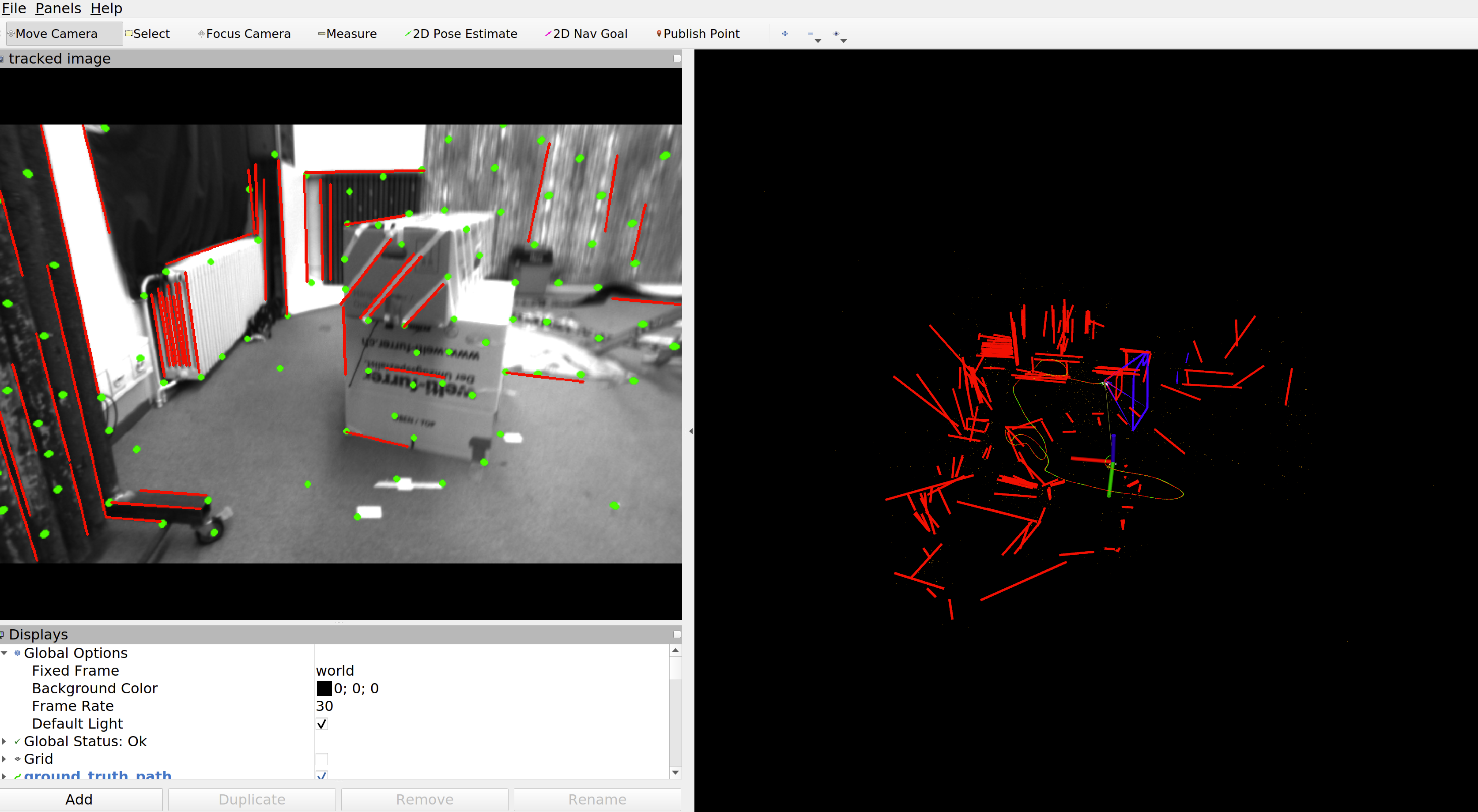
source devel/setup.bash
roslaunch plvins_estimator plvins_show_linepoint.launch
rosbag play MH_05_difficult.bag注意:我们此时需要需要将src/PL-VINSvins_estimator/launch/下的plvins-show-linepoint.launch改为plvins_show_linepoint.launch(注意是下划线)文件名
数据集下载地址如下:
kmavvisualinertialdatasets – ASL Datasets
博主github仓库中的代码全部都修改完毕,适用ubuntu20.04 opencv4


